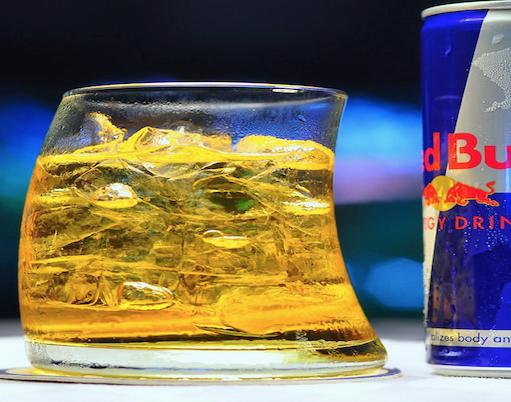Reprinted by permission of McGill University Office for Science and Society.
###
On March 1, 2018 the body of teenager Athena Gervais was discovered face down in a creek in the Montreal suburb of Laval. The coroner’s report of the case was just made public and concludes that she had stumbled into the creek after becoming intoxicated. Athena had purchased three “energy drinks” that contained 11.9% alcohol and consumed most of these within about 23 minutes resulting in a blood alcohol level of 192 mg/100 mL, way above the 80 mg/100mL which is the legal limit for driving in Quebec. The beverage she consumed had the repugnant name “FCKD UP,” described as a “caffeinated, high-alcohol, high-sugar drink.” They have since been removed from the market and Quebec has lowered the legal limit of alcohol to seven percent in beverages that can be sold in convenience stores.
When this story first emerged, one of my students asked me if it was okay to mix Red Bull with alcohol. Good question. Alcohol is a central nervous system depressant while caffeine is a stimulant. And as Mary Poppins told us, “a spoonful of sugar makes the medicine go down.” The net effect of caffeine and sugar is to mask the onset of drunkenness and increase consumption by creating an illusion of sobriety. Besides the common problems associated with overindulgence in alcohol, there is the question of some sort of extra risk when alcohol is combined with caffeine. Red Bull is a non-alcoholic “energy drink” that contains both sugar and caffeine, hence my student’s valid question.
In Canada, the addition of caffeine to alcoholic beverages is illegal, but “natural flavours” can be added. This provides a loophole for squeezing caffeine into the drink in the form of guarana extract. Guarana is a climbing plant native to South America that produces a fruit with seeds containing about four times the amount of caffeine found in coffee beans. The seeds’ effects were recorded as far back as the 17th century when a Jesuit missionary noted that members of an Amazon tribe who consumed the seeds had “so much energy, that when hunting, they could go from one day to the next without feeling hungry.”
When it comes to including guarana in a drink, the only requirement is that its presence be identified on the label. There is no obligation to list the amount of caffeine, and depending on just how the seeds are extracted, the content can vary greatly. After the teenager’s unfortunate death, Health Canada tested FCKD UP and found the amount of caffeine to be negligible, meaning that it was not a combination of alcohol with caffeine that resulted in the teenager’s death. Guarana, however, is not off the hook.
Plants are veritable chemical factories, capable of producing hundreds of compounds, raising the question of guarana components other than caffeine having a physiological effect. Researchers at Colgate University in the U.S. examined this possibility using the planarian, an aquatic flatworm, as a model system. These creatures have a central nervous system that uses neurotransmitters comparable to those found in mammals and are therefore commonly used in studies of stimulants. Their friskiness, or “locomotor activity,” in response to exposure to specific substances can be readily observed and conclusion drawn about possible effects in humans.
Curiously, caffeine was not found to have a marked effect on planarian motility, but guarana extract provided stimulation, especially when combined with glucose. Specific chemicals responsible for the activity have not been identified, but the plant is known to contain theophylline and theobromine, both with recognized biochemical activity. Furthermore, guarana contains tannins, compounds that can form complexes with other molecules, including caffeine, possibly leading to slower release and a longer-lasting stimulant effect. More research is needed, but evaluating the effects of the combination of alcohol with guarana may have to go beyond considering just a caffeine-alcohol reaction.
A caffeine-alcohol reaction, however, is the main concern when it comes to the question of mixing an “energy” drink such as Red Bull with an alcoholic beverage. These energy drinks promise to stimulate both the body and the mind with a combination of ingredients which in the case of Red Bull amount to caffeine, taurine, and various B vitamins. Taurine is widely found in animal tissues and owes its name to the Latin term for “bull,” since it was first isolated from the bile of that animal in 1827. While taurine has a number of biological functions, there is no evidence that it has any sort of energizing effect. It is likely added to justify the drink’s name, which is intended to conjure up an image of becoming “strong as a bull.” Neither do B vitamins produce any sort of stimulation, leaving caffeine as the “energizing” component of Red Bull.
The literature on energy drinks is extensive and reveals many cases of emergency room visits, mostly due to palpitations and arrhythmias, either when such beverages are consumed with alcohol or alone, A randomized controlled trial has even shown that energy drinks produced more electrocardiogram aberrations than a control beverage containing an equivalent amount of caffeine. This suggests that further evaluation of non-caffeine ingredients in energy drinks is warranted. In virtually all cases of adverse effects, though, consumption was high, over 500 mL.
Bottom line? Consuming one alcohol-Red Bull mix is unlikely to be a problem. More, could be. And there should be more control over the way that alcoholic “energy drinks” are sold. The Quebec coroner has accordingly recommended that the federal government ban the sale of alcoholic energy drinks with names or images that downplay excessive consumption, drunkenness or alcohol addiction. Hopefully governments will expend some energy in controlling the marketing of alcoholic “energy beverages.”
The original McGill University OSS post can be found here.




